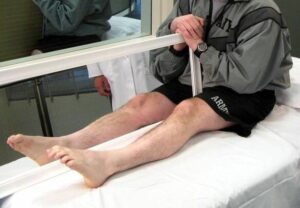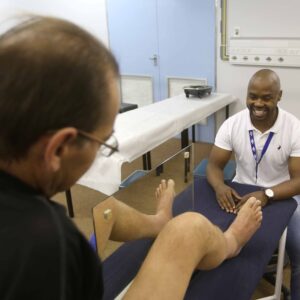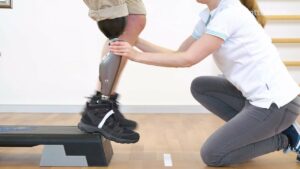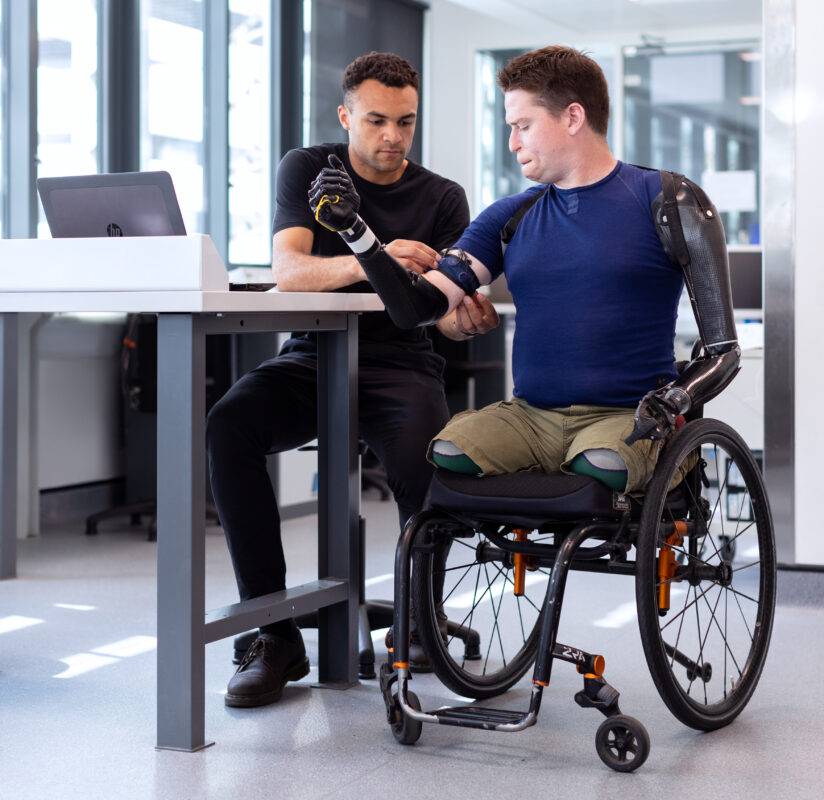For many people, phantom limb pain (PLP) is a debilitating symptom that can make everyday tasks difficult. For some, PLP is so severe that it can lead to physical therapy appointments and even surgery. In this blog post, we will provide you with a comprehensive guide to phantom limb pain, including tips on how to treat it and what you can do to prevent its development in the first place.
Contents
What Is Phantom Limb Pain?

Phantom limb pain (PLP) is a widespread and difficult-to-treat condition that can occur after an amputation, tumor removal or another injury to the limb. PLP can be extremely frustrating and debilitating, causing people to feel as if their missing limb is still present.
This disease is also a common cause of sleep deprivation. A lack of adequate sleep can worsen the symptoms of PLP and make it harder to cope with the pain.
There’s no one cause for PLP, but it can often be caused by a complex mix of physical, psychological, and neurological factors. Treatment typically involves addressing the underlying causes of the condition, including trauma to the nerves and muscles controlling the phantom limb.
If you’re experiencing PLP and don’t see improvement with standard treatments, talk to your doctor about other options. Some people successfully achieve relief through surgery or medical implants that stimulate nerve endings in the stump.
Physical Therapy For Phantom Limb Pain
There is no one-size-fits-all approach to treating phantom limb pain, as the severity and type of injury will vary. However, physical therapy can be very effective in alleviating this type of pain.
In general, physical therapy for phantom limb pain will focus on restoring function to the affected extremity. This may involve exercises that help improve strength and mobility, as well as treatments such as heat and ice packs. Additionally, some patients may require surgery to remove or reduce pressure on the nerve endings in the stump.
One of the most important factors in achieving long-term relief from phantom limb pain is ongoing therapy. If symptoms improve but physical therapy is discontinued, the pain may return later on. Thus, it is important to seek regular treatment to maintain progress.
Types of Physical Therapy For Phantom Limb Pain
There are many types of physical therapy for phantom limb pain, each person may be choosing other types of therapy based on their personal experience, symptoms, and goals.
Transcutaneous Electrical Nerve Stimulation (TENS)
Transcutaneous Electrical Nerve Stimulation (TENS) is a type of electrical stimulation therapy that is used to treat various types of pain. TENS works by sending small electrical pulses through the skin to the affected area. These pulses cause pain relief by activating nerve cells in the area. TENS can be used to treat pain from conditions such as phantom limb pain, back pain, neck pain, and migraine headaches.
TENS is a safe and effective treatment option for many patients. Some common side effects of TENS include mild tingling or warmth, temporary relief of symptoms, and an increased feeling of well-being. Patients should consult with their physician before starting TENS therapy, as there are certain contraindications (such as severe heart problems) that should not be treated with this type of therapy.
Acupuncture
In acupuncture, tiny needles are inserted into specific points on the body to relieve pain. Acupuncture is said to work by affecting the body’s energy flow, which can help relieve pain. Acupuncture can also be used in conjunction with other treatments, such as physical therapy.
According to the National Center for Complementary and Integrative Health (NCCIH), acupuncture stimulates the flow of Qi, which can help to reduce inflammation and pain. Additionally, acupuncture has been shown to improve sleep quality and function, increase feelings of well-being, and decrease stress levels. If you’re considering acupuncture as a potential treatment for PLP, be sure to discuss your goals with your physical therapist.
Reasons To Choose Physical Therapy For Phantom Limb Pain

There are many reasons to choose physical therapy for phantom limb pain. Physical therapists have a deep understanding of the neurology of the body and can provide targeted treatment to help reduce or resolve the pain. They also have expertise in treating conditions that can cause phantom limb pain, such as peripheral nerve damage or other nerve injuries.
Some of these reasons why people may use physical therapy for phantom limb pain:
Cost-Effective
One of the main benefits of physical therapy for phantom limb pain is that it is often very affordable. This is due in part to the fact that physical therapists have access to a wide range of treatments and therapies, as well as equipment and resources needed to help treat this condition.
Targeted Treatment
Physical therapy for phantom limb pain typically takes a targeted approach, which means that the therapist will work with you individually to identify the source of your pain and develop a treatment plan specific to your needs. This can be a crucial step in resolving the pain and improving your overall quality of life.
Experience & Expertise
Physical therapists are experts in treating conditions that can cause phantom limb pain, such as peripheral nerve damage or other nerve injuries. They have years of experience working with patients who suffer from this type of pain, which means they are likely to provide you with the best possible treatment options.
Effectiveness
Another benefit of physical therapy for phantom limb pain is that it is often very effective in resolving the pain. This is because physical therapists have a deep understanding of the neurology of the body and can target specific areas of the body where the pain is originating from.
Physical therapy for phantom limb pain can be an effective treatment option for those who suffer from this type of pain. If you are looking for an affordable and reliable solution, physical therapy may be a good option for you.
Preparing For Physical Therapy For Phantom Limb Pain

Physical therapy can help people with phantom limb pain by teaching them exercises and strategies to reduce the sensation of pain. Many people find that physical therapy helps manage their phantom limb pain. Physical therapists will typically begin by assessing your current level of pain and disability. They will then work with you to create a personalized treatment plan.
There are many tips for preparing for physical therapy for phantom limb pain. Here are a few:
Discuss Your Expectations
One of the main goals of physical therapy for phantom limb pain is to help you regain mobility and function. Before starting therapy, it is important to discuss your expectations with your therapist. This will help ensure that you are targeting the right areas and making progress.
Plan Ahead
Physical therapy can be strenuous, so it is important to prepare yourself mentally and physically. Make a list of the exercises and stretches that you will be doing, and make sure that you have adequate clothing and gear available. If possible, schedule sessions at a time when you are least likely to be interrupted.
Take Advantage Of Support Groups
Many people find support groups helpful in managing their phantom limb pain. Groups allow individuals to share experiences and strategies, which can help increase understanding and support. There are many groups available across the country, so it is best to consult with your therapist or local community resources to find one that fits your needs.
Try Medications
Many people find that medications help manage their phantom limb pain. Depending on the severity of your condition, your therapist may recommend medications such as ibuprofen or opioids. Discussing medication options with your therapist is an important step in treating your condition.
Be Patient and Persistent
Physical therapy for phantom limb pain is a long-term process. It is important to be patient and persistent in achieving your goals. If you are unable to complete an exercise or stretch, do not be discouraged. Try again later or with a different therapist. Remember, progress is always possible with dedication and effort.
Conclusion
Photo limb pain is a condition in which you feel pain in your limbs even though they no longer exist.
If you’re experiencing phantom limb pain, it’s important to see a physical therapist. A physical therapist can help you understand your condition, find solutions, and put in place the necessary treatment plan. In addition to providing support during the acute phase of phantom limb pain (the first few weeks after losing a limb), physical therapy can also prolong the time until the sensation returns to the area. If you are suffering from phantom limb pain, don’t hesitate to seek out professional help.
Physical Therapy help patients recover from pain. If you’re experiencing Back pain, Shoulder pain, Knee pain, Neck pain, Elbow pain, Hip pain, or Arthritis pain, a physical therapist at MantraCare can help: Book a physiotherapy session.


